206 scholarly books by Arc Humanities Press and 11
start with B
206 scholarly books by Arc Humanities Press and 11
206 scholarly books by Arc Humanities Press
11 start with B start with B
11 start with B start with B

The Battle of the Bard
Shakespeare on US Radio in 1937
Michael P. Jensen
Arc Humanities Press, 2018
Difficult as it is to imagine today, in 1937 America’s two leading media companies fought over the right to perform Shakespeare for an American radio audience in an attempt to bring prestige to their networks. The resulting fourteen broadcasts are among the more remarkable recreations of Shakespeare of their time. This lively and engaging book shows the cultural dominance of radio in the 1930s, and tells the story of why the networks each wanted to lord Shakespeare’s prestige over the other, how they put their series together, the critical reception, and the cultural impact and legacies of the broadcasts.
[more]
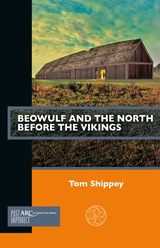
Beowulf and the North before the Vikings
Tom Shippey
Arc Humanities Press, 2022
Ever since Tolkien’s famous lecture in 1936, it has been generally accepted that the poem Beowulf is a fantasy, and of no use as a witness to real history. This book challenges that view, and argues that the poem provides a plausible, detailed, and consistent vision of pre-Viking history which is most unlikely to have been the poet’s invention, and which has moreover received strong corroboration from archaeology in recent years. Using the poem as a starting point, historical, archaeological, and legendary sources are combined to form a picture of events in the North in the fifth and sixth centuries: at once a Dark and a Heroic Age, and the time of the formation of nations. Among other things, this helps answer two long-unasked questions: why did the Vikings come as such a shock? And what caused the previous 250 years of security from raiders from the sea?
[more]
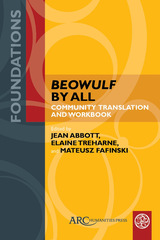
Beowulf by All
Community Translation and Workbook
Jean Abbott
Arc Humanities Press, 2021
This is a community translation of the earliest English epic poem. Beowulf tells the story of a mythical hero in northern Europe in, perhaps, the sixth century. Alongside his story, multiple other shorter narratives are told and many other voices are heard, making it a rich and varied account of the poet’s views of heroism, conflict, loyalty, and the human condition.
The poem is widely taught in schools and universities, and has been adapted, modernized, and translated dozens of times, but this is the first large-scale polyvocal translation.
Readers will encounter the voices of over two hundred individuals, woven together into a reading experience that is at once productively dissonant, yet strangely coherent in its extreme variation. We hope that it turns the common question "Why do we need yet another translation?" on its head, asking instead, "How can we hear from more translators?," and "How can previously unheard, or marginalized voices, find space, like this, in the world of Old English Studies?" With this in mind we invite a new generation of readers to try their own hand at translating Beowulf in the workbook space provided opposite this community translation.
It is often through the effort of translating that we see the reality of the original.
[more]

Beowulf—A Poem
Andrew Scheil
Arc Humanities Press, 2022
Why should anyone, aside from specialist historians and philologists, read Beowulf? This book presents a passionate literary argument for Beowulf as a searching and subtle exploration of the human presence. Seamus Heaney praised Beowulf as "a work of the greatest imaginative vitality": how is that true? The poem's current scholarly obsessions and its popular reception have obscured the fact that this untitled and anonymous 3182-line poem from Anglo-Saxon England is a powerful and enduring work of world literature. Beowulf is an early medieval exercise in humanism: it dramatizes, in varied and complex ways, the conflict between human autonomy and the "mind-forg'd manacles" of the world. The poem is as relevant and moving to any reader today as it was during the early Middle Ages. This book serves both as an invitation and introduction to the poem as well as an intervention in its current scholarly context.
[more]
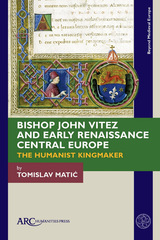
Bishop John Vitez and Early Renaissance Central Europe
The Humanist Kingmaker
Tomislav Matić
Arc Humanities Press, 2022
This comprehensive biography of John Vitez, an instrumental figure of the Early Renaissance, presents a complex picture of cultural, political, and religious developments in Central Europe through one man’s life. Drawing on close study of Vitez’s writings and his various political and artistic networks of influence, Tomislav Matić demonstrates the wide scope of this church leader’s involvement in late medieval Central Europe. Not only were Vitez’s writings a catalyst for the introduction of humanism across the region, he was a patron of the arts, an avid astrologer, a master diplomat, and even a kingmaker, thus central to both political and cultural developments.
[more]

Book Conservation and Digitization
The Challenges of Dialogue and Collaboration
Alberto Campagnolo
Arc Humanities Press, 2024
The successful transmediation of books and documents through digitization requires the synergetic partnership of many professional figures, that have what may sometimes appear as contrasting goals at heart. On one side, there are those who look after the physical objects and strive to preserve them for future generations, and on the other those involved in the digitization of the objects, the information that they contain, and the management of the digital data. These complementary activities are generally considered as separate and when the current literature addresses both fields, it does so strictly within technical reports and guidelines, concentrating on procedures and optimal workflow, standards, and technical metadata. In particular, more often than not, conservation is presented as ancillary to digitization, with the role of the conservator restricted to the preparation of items for scanning, with no input into the digital product, leading to misunderstanding and clashes of interests. Surveying a variety of projects and approaches to the challenging conservation-digitization balance and fostering a dialogue amongst practitioners, this book aims at demonstrating that a dialogue between apparently contrasting fields not only is possible, but it is in fact desirable and fruitful. Only through the synergetic collaboration of all people involved in the digitization process, conservators included, can cultural digital objects that represent more fully the original objects and their materiality be generated, encouraging and enabling new research and widening the horizons of scholarship.
[more]
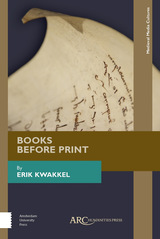
Books Before Print
Erik Kwakkel
Arc Humanities Press, 2018
<div>This beautifully illustrated book provides an accessible introduction to the medieval manuscript and what it can tell us about the world in which it was made and used. <i>Books Before Print</i> explores how manuscripts can act as a vibrant and versatile tool to understand the deep historical roots of human interaction with written information. It highlights extraordinary continuities between medieval book culture and modern-world communication, as witnessed in medieval pop-up books, posters, speech bubbles, book advertisements, and even sticky notes.</div>
[more]
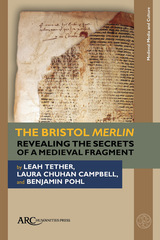
The Bristol Merlin
Revealing the Secrets of a Medieval Fragment
Leah Tether
Arc Humanities Press, 2022
The discovery of seven manuscript fragments of the Old French Suite Vulgate du Merlin in a set of early printed books in the Bristol Central Library hit global headlines in 2019. This book contains a comprehensive study of these fascinating Arthurian fragments.
Beginning with an extensive contextual history, the authors reveal details of the fragments’ origin, their importation to England, and their subsequent journey to a waste pile in a bookbinder’s workshop, where they would be incorporated into the bindings of a four-volume edition of the works of Jean Gerson in the early sixteenth century. A full enquiry into the provenance of these host volumes sets out the possible routes from the bookbinder’s workshop to their final home in Bristol Central Library.
Using multi-spectral imaging to read the damaged sections of text, the authors also provide a full edition and translation of the narrative contained in the fragments.
[more]
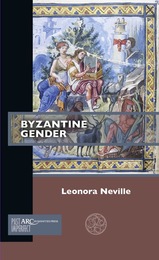
Byzantine Gender
Leonora Neville
Arc Humanities Press, 2019
<div>Why were virtuous Byzantine women described as manly? Why were boys' bodies thought to be closer in constitution to those of women than adult men? Did Byzantines think eunuchs were men? </div><div>This lively and personal book explains some key aspects of how people of the Medieval Roman Empire (Byzantine Empire) conceived of men and women, masculinity and femininity, and proper behaviour for men and women. By laying bare fundamental ideas about how gender was defined and performed, <i>Byzantine Gender</i> enables readers to understand Byzantine society more fully. And by providing background information about Byzantine gender, it makes it easier to approach and appreciate the fascinating otherness of Byzantine culture.</div>
[more]
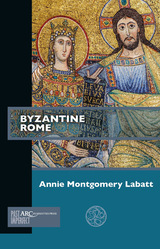
Byzantine Rome
Annie Montgomery Labatt
Arc Humanities Press, 2022
Why does medieval Rome look so, for lack of a better word, Byzantine? Why do its monuments speak an aesthetic of the medieval East? And just how do we quantify that Byzantine aesthetic or even the word “Byzantine”?
This book seeks to consider the ways in which the artistic styles and iconographies generally associated with the eastern medieval tradition had a life in the West and, in many cases, were just as western as they were eastern. Rome’s medieval monuments are a fundamental part of the history of the East, a history that says more about a cross- cultural exchange and interconnected “Romes” than difference and separation.
Each chapter follows the political and theological relationships between the East and the West chronologically, exploring the socio-political exchanges as they manifest in the visual language of the monuments that defined the medieval landscape of Rome.
[more]
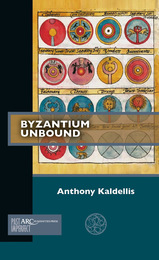
Byzantium Unbound
Anthony Kaldellis
Arc Humanities Press, 2019
This book proposes a long view of Byzantium, one that begins in the early Roman empire and extends all the way to the modern period. It is a provocative thought-experiment which posits Byzantium as the most stable and enduring form of Greco-Roman society, forming a sturdy bridge between antiquity and the early modern period, as well as between East and West, and which sees the ancient Greek, Roman, and Christian traditions as flowing together. It offers a Byzantium unbound by other cultures and fields of study that would artificially cut it down to size.
[more]
READERS
Browse our collection.
PUBLISHERS
See BiblioVault's publisher services.
STUDENT SERVICES
Files for college accessibility offices.
UChicago Accessibility Resources
home | accessibility | search | about | contact us
BiblioVault ® 2001 - 2024
The University of Chicago Press









